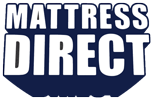
Kids need a lot of sleep. Depending on their age, children need to sleep anywhere from 9 to 14 hours a night to provide optimal time for their bodies to rest and recharge for the next day. Without the proper amount of sleep kids can be less attentive in school, have delayed response time, loss of short-term memory, and develop behavioral issues such as anxiety and anger management. Not only does it affect cognitive development but not having the proper amount of sleep can also lead to obesity. Setting a proper schedule for sleep in children can help kid’s growth and prevent them from having sleep problems in the future. The average adult who doesn’t get the proper amount of sleep can develop heart disease, diabetes, high blood pressure, sleep apnea, strokes, depression, anxiety, forgetfulness, and impaired judgement. Setting the right schedule when people are younger allows people to continue this into adulthood and prevent future problems.
Not only can lack of sleep affect behavior in children and have future consequences it also affects growth. The pituitary gland excretes growth hormone during the day, but most of the gland’s release is right after a child falls asleep and continues throughout the night. If a child is not receiving a full night’s rest of quality sleep the child might grow more slowly or have a lack of regulating hormones in their body. These hormones do more than just regulate growth; they regulate how the body reacts to food and again how children react to certain stresses or situations. When the body doesn’t get enough sleep and hormones children begin craving higher calorie carb food which can lead to insulin resistance and possibly diabetes.
Recommended quality sleep for Children per Day
1-3 Years Old: 12 - 14 hours
3-6 Years Old: 10 - 12 hours
7-12 Years Old: 10 - 11 hours
12-18 Years Old: 8 - 9 hours
Children need more than just the hours of sleep their sleep quality is just as important, if not more so, as it is in adults. These are the years that people grow the most physically and mentally. Sleep is crucial to maintaining health for child’s whole life. They need pressure relief and support on their young bodies so that they do not develop chronic pain and get the full rest they deserve. When looking at support systems for your child the number one thing is get something new. Hand me down clothing is one thing, but a hand me down mattress produces a myriad of problems. The mattress is older and has been slept on by, more than likely, two people and if the mattress is not providing enough support for the original user(s) then why would it provide enough support for a child? Second a hand me down mattresses have dust mites, sweat, dead skin cells, etc. inside of the mattress and it could create issues for children, especially for those who have allergies.
When looking at the different types of support for the child let them have a say in picking out a new mattress. It is remarkable to watch children picking out a new sleep system—they really know what they want and how it feels to them. Just like adults the type of support they need is determined by how they sleep. Ask your child what position they like to sleep in. More than likely they will know the answer. If your child tends to sleep on their side a mattress with more pressure relieving material or foams would be a better choice; while back and stomach sleepers tend to need a little bit less. Finding the right amount of pressure relief is unique to every child. Just because a child can sleep on anything or anywhere does not mean they should. Also children need room to grow and stretch. Get the biggest mattress the space allows for.
Starting kids out right allows for them to be healthier for the rest of their lives.
http://www.babycenter.com/0_the-connection-between-sleep-and-growth_3658990.bc
http://kidshealth.org/parent/general/sleep/sleep.html#
Help kids get a better night's sleep with Mattress Direct's new King Koil Kids line! These mattresses are designed to help a child's growing body get the sleep they need and reach their full potential!







